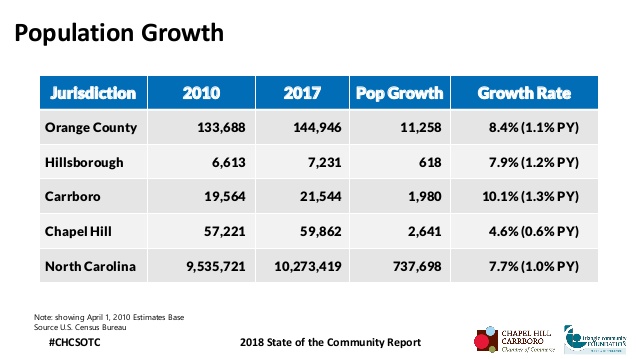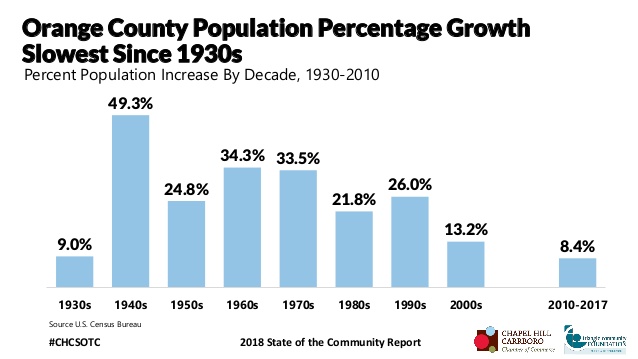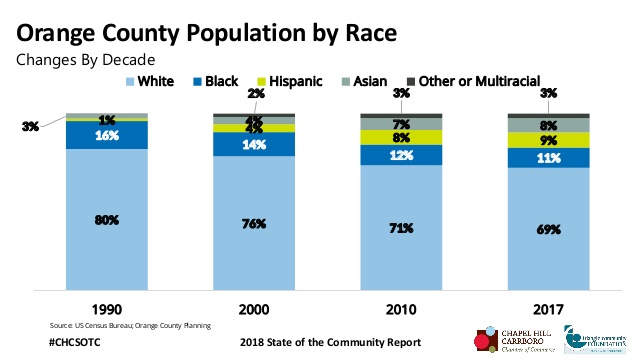What is happening to Orange County’s population?
Here in our community, we often talk about the ways in which our population is changing – but the numbers don’t always support the common beliefs.
Chapel Hill-Carrboro Chamber of Commerce president Aaron Nelson says he sees this when it comes to our community’s population growth.
“When I talk to groups and I say, ‘will you estimate our percentage of growth,’ (they say it’s) three, four, five, six percent,” he says.
But Nelson also says Orange County’s actual population growth is much slower: this decade, Orange County’s population has grown by 1.1 percent each year, on par with the state average. Chapel Hill’s growth has been even slower: just 0.6 percent per year since 2010, according to Nelson.

“(In terms of) percentage growth, this is our slowest-growing decade since the 1930s,” he says.

Even in terms of real numbers, Orange County’s growth has slowed: Nelson says the county will add about 15,000 people this decade, fewer than any decade since the 1960s. About half of that growth comes from new people moving to Orange County from outside the US; most of the rest is from new babies being born. Domestic migration is a distant third.
In addition to misconceptions about raw population, Nelson also says there’s a second common belief that isn’t borne out by the facts – namely, the belief that Orange County is becoming racially less diverse.
“This is the least-white we’ve ever been,” he says. “This is the most diverse community we’ve ever been.”
In 1990, Nelson says, 80 percent of Orange County’s population was white; it’s now 69 percent as of 2017. That’s due to growth in the Asian and Latino communities: about 17 percent of Orange County residents today are Asian or Latino, up from about four percent in 1990.

Orange County’s black population has declined, at least in percentage terms: it’s now just 11 percent of the county’s overall population, down from 16 percent in 1990. But Nelson says there are about 2,000 more African-Americans in Orange County today than there were in 1990.
In other words, he says, the black population hasn’t declined; it’s just less of a percentage today because Orange County has gotten more diverse in other ways.
One thing, though, has not changed: Chapel Hill is still a college town, and that continues to affect our demographics. When it comes to age, Rebecca Tippett of Carolina Demography says Chapel Hill’s population acts very much like other college towns: residents move in when they turn 18 and move out when they near 30.

“This is what college towns do: they take in young people (and) create really talented workers, who then often go to start employment somewhere else,” Tippett says. She adds that the same demographic profile also applies to towns with military bases and towns with large prisons – all, of course, for very different reasons.
Nelson and Tippett delivered those findings at the Chamber’s annual “State of the Community” presentation, last week at the Friday Center. (The graphs above are from Nelson’s presentation.)
Visit this link for a full slideshow of statistics, graphs and charts from Nelson’s presentation – including data on housing costs, retail spending, wage growth, poverty rates, educational achievement, crime rates and more.


